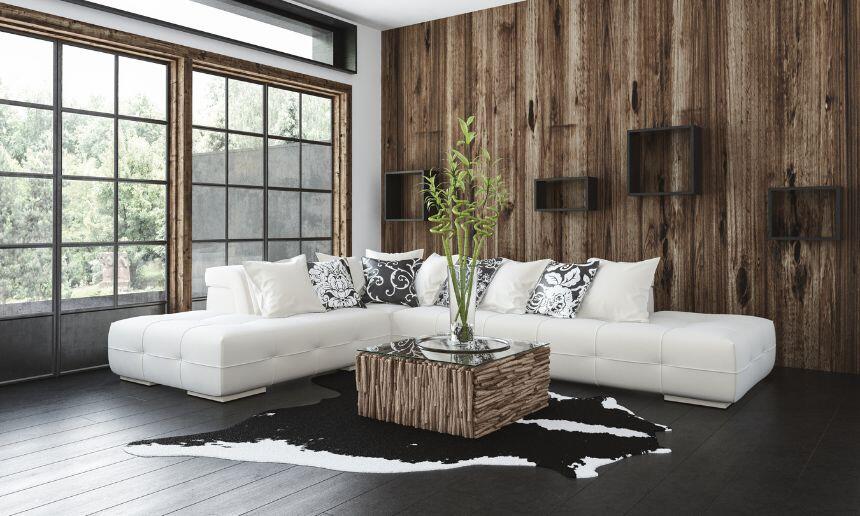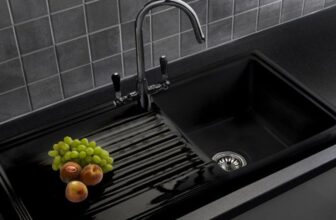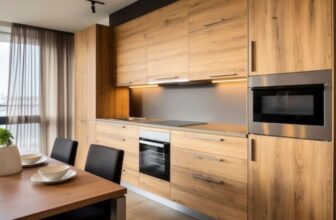Wood Paneling Vs Drywall – A Comparison
Are you trying to decide between wood paneling and drywall for your home’s walls?
One of the key factors that impact the overall look and feel inside your house is the choice of drywall and wood paneling.
Depending on what you choose, the paneling can make the living environment look warmer and more intimate, or liven up the space and turn it more bright and vibrant.
Over the last couple of decades, drywall was by far the most popular paneling option.
However, after being huge in the mid-20th century and falling out of favor for multiple decades, wood paneling is making a big comeback as a viable choice for contemporary homes, this time with a modernized and more aesthetically pleasing design.
So, if you’re building a new house or renovating an old one, you will likely be choosing between these two to cover the walls.
To help out, I’ll compare wood paneling vs drywall and explain what advantages and drawbacks each of them can bring to your home.
| Wood Paneling | Drywall | |
| Appearance | Adds warmth and texture to a room; can be customized with different finishes | Smooth and modern, suitable for most interior design styles |
| Cost | Can be more expensive than drywall depending on the type of wood used | Typically less expensive than wood paneling |
| Installation | Requires more labor and skill to install than drywall | Easier to install, especially for those with basic DIY skills |
| Durability | Resistant to dents and scratches, but can be prone to water damage and warping | Prone to dents and scratches, but more resistant to water damage |
| Maintenance | Requires periodic cleaning and refinishing to maintain appearance | Minimal maintenance required, but may need occasional patching and painting |
Table of Contents
What Is Wood Paneling?

Wood paneling is used to clad the interior walls and ceilings in the house with a decorative coating made of smaller pieces of wood.
Typically, this type of wall treatment is used when you want to give the room a more natural, warmer, and elegant look.
Wood paneling comes in a variety of styles and with many different options regarding the type of wood, color shade, and finishes.
So, even though you may think that all wood panels look alike, you’ll still have plenty of options to design your interior the way you want.
There are two main options when paneling with wood – board and sheet paneling, with the latter being somewhat cheaper.
Plus, different types of wood will bring different color tones and grain patterns. You can also choose between different types of finishes and go with either a glossy or matte look.
What is Drywall?

Drywall is arguably the most popular type of wall and ceiling covering, both in private homes and commercial buildings.
The main reasons for its popularity are that it’s relatively easy to install and it provides a smooth and attractive finish.
Typically, drywall comes in the form of large panels that can be cut to measure.
The drywall panels are made of dried gypsum minerals and crystallized water. This combination makes them fire-resistant, mainly due to the high percentage of water.
These materials are also great for absorbing sound, so the drywall can serve as a great insulator if you want quieter rooms.
Another advantage of drywall is that it can easily be painted or covered with wallpaper, so it can easily be matched with any style of interior design.
Finally, drywall is also rather durable against wear and tear and even in the case of damage can be easily repaired.
Wood Paneling Vs Drywall – What’s The Difference?
In order to make the right decision when choosing between wood paneling and drywall for your home project, it’s important to properly understand the differences between the two.
Below is a short overview of the main distinctions between these two types of wall treatment.
Installation
The installation is somewhat simpler for wooden panels, but it takes more time than when installing drywall. The biggest issue when installing the drywall is the weight.
A 4×8-foot panel that is half an inch thick weighs more than 50 pounds, meaning that you can’t carry it, let alone install it on your own,
Plus, you have to tape the panels, apply the joint compound or mud, and, finally work on smoothing the drywall surface.
This takes a lot of time and effort and that’s before you start painting. Even though you don’t have to paint the drywall, leaving it as it is will look rather unattractive.
Wooden panels don’t have to be painted and there’s not much to the installation process other than applying the adhesive and caulking the sheets.
However, there’s a lot of precise measuring and planning, although you’ll be able to fit wood panels by yourself.
Strength
Both wood panels and drywall can carry artwork, TV, or any other item you plan to hang on the wall.
However, in the case of wood paneling, you can screw or drill the bolts and hooks directly into the panel, as it has enough structural strength to support it.
Plus, you don’t have to worry about making a dent or damaging the panel while drilling through.
On the other hand, drywall will require studs or anchors to support any object that’s a bit heavy.
Durability
In general, wooden paneling is more durable than drywall. Once you install wood paneling, you’re most likely set for life, or at least until you decide to change it.
However, there is some maintenance involved, especially if you live in an area with a humid climate. In that case, you’ll have to occasionally stain the panels to prevent rotting.
Drywall is also fairly durable, but is much more susceptible to scuffs, dents, holes, and other damages.
Plus, you’ll vet to repaint it from time to time.
The good news is that repairing the drywall is typically rather simple and cheap.
Also, be aware that drywall installed in high-moisture rooms, such as bathrooms, will not last as long.
Insulation and Fire Resistance
As wood is a natural insulator, wooden panels will provide better thermal insulation than drywall and do better at keeping the cold out and preventing the heat from leaking outside the room.
However, drywall scores better when it comes to sound insulation, which is important if you want peace and quiet.
Another advantage of drywall is its fire-resistant properties.
Wood paneling, naturally, doesn’t offer much in terms of fire prevention, and is more likely to spread fire than to protect from it.
Conclusion
Wood paneling and drywall are both solid options when it comes to wall covering.
Both materials have their benefits and downsides that you should carefully consider, as these will determine which one is better suited for your home.
Wooden paneling is stronger, more durable, provides better thermal insulation, and will provide a classic and natural look to the room.
Drywall, on the other hand, is easier and cheap to install, features better fire resistance and sound insulation, and provides more options when it comes to painting.
It’s important to note that these are not necessarily separate options.
As they perfectly complement each other, you can install wood paneling over the drywall and get the best of both worlds.



















































































